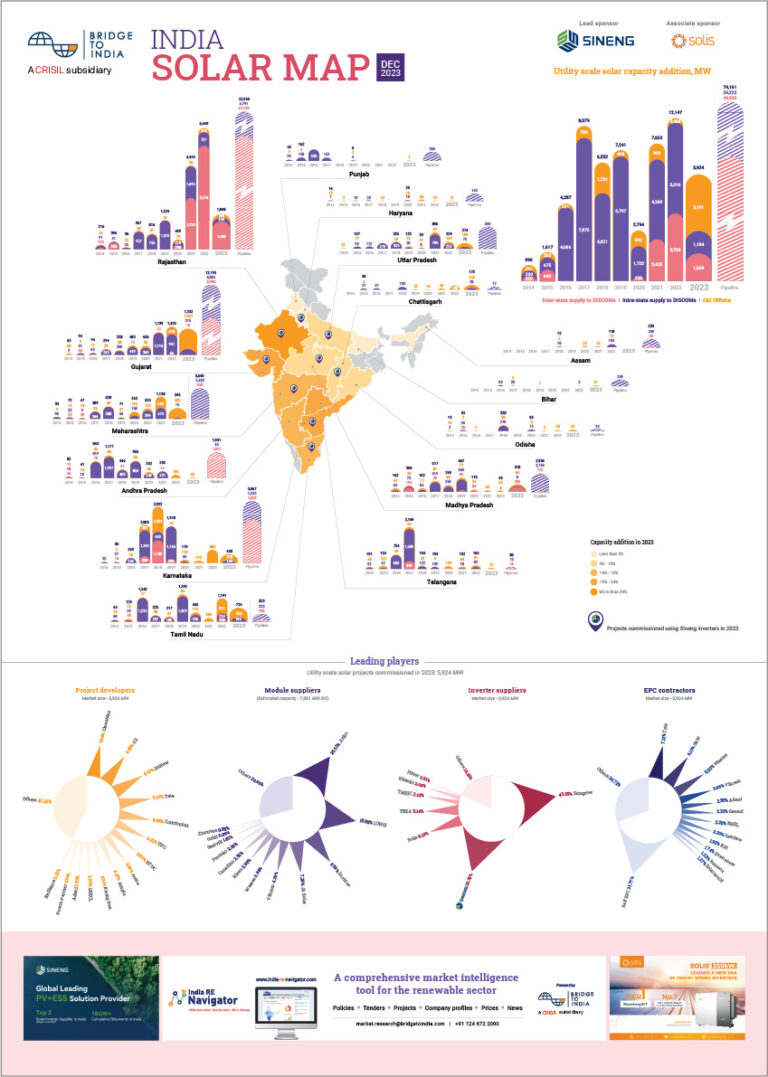In the last three months, five Indian developers have raised a total of USD 1.7 billion through green bonds. Adani Green raised USD 750 million priced at 4.30% with maturity of three years. Acme completed its first issuance with USD 334 million of bonds priced at 4.7% for a five-year maturity. Azure raised USD 414 million, 5-year money at only 3.58%, the lowest rate by an Indian developer. The company will use the monies to refinance green bonds issued in 2017 at a cost of 5.50%. One of the pioneering issues came from Vector Green, who raised USD 166 million in the Indian market at a cost of only 6.40% for three-year bonds.
- Hunt for yield by international institutional investors is helping the renewable sector;
- Domestic term debt market has also turned benign;
- Developers should brace for more challenging financing environment as liquidity starts tightening post COVID;
International institutional investor interest in the sector has soared due to lax monetary regime worldwide and shift towards ESG themed issuers. Investors are hunting for yield as rates in developed countries stay unattractive (German 10-year government yields at -0.28%, USA 1.14%, UK 0.85%). Recent issues have been oversubscribed by up to five times and rates have fallen from about 6.50% three years ago to the recent low of 3.57%.
Total green bond issuance in last 12 months is estimated at USD 4.3 billion, up by 168% over the previous year. Leading developers such as Greenko (total issuance USD 2.8 billion), ReNew (USD 2.6 billion), Adani (USD 1.6 billion) and Azure (USD 850 million) have benefitted immensely from favourable capital market conditions.
Even the domestic term debt market has turned benign. Despite a small number of active lenders, cost of greenfield project financing has fallen to around 9.00-9.25% from about 10.5-11.00% about two years ago. Operational projects with satisfactory track record and strong offtake are able to refinance at about 8.00-8.50%. Government-owned Power Finance Corporation (PFC) continues to dominate greenfield project finance. Other government institutions (IREDA, REC) and some commercial banks including SBI, Axis and HDFC are also active albeit at a smaller scale. Private NBFCs like L&T Infra Finance, Tata Cleantech and PTC Financial Services have become marginal players because of higher cost of funds, high risk aversion and small appetite.
Easy liquidity in the financial markets has provided welcome relief for the sector struggling with aggressive tariffs, rising module and other costs etc. Developers are making aggressive assumptions on financing to make case for lower tariffs in auctions – leverage of 80% or even higher, debt maturity of 20-22 years, cost of around 8.00%. But things have probably got as good as they possibly could, and there are risks ahead. Any tightening of monetary policy, as economies rebound from COVID, would have almost immediate adverse effect on appetite and rates for Indian renewable projects. Similarly, a pick up in commissioning activity and increasing demand for capital are bound to make financing more challenging in the coming years.












